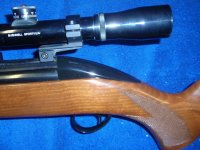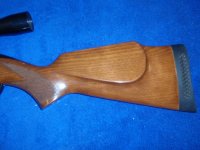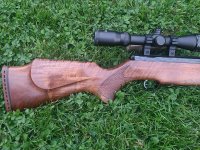It’s fine to strip the checkering. Just use lacquer thinner (to remove the stripper and finish) with a very soft brush to apply it. Then blow out the wet checking with air. Don’t wire brush it or even handle it when it’s wet. To soft. Then when it’s dry use blue painters tape and an exacto knife and cut in the edges. Now sand with the grain by hand up to the tape. Leave the tape on through the entire staining and finishing process. The tape can be removed a couple times to check out everything. To many times and it will loose its adhesive. If that happens re-tape. Remember, hand checkering is done after the stock is completely finished. So, if you want it to look correct, no finish (not even an oil finish) in the checkering. If using a heavy bodied stain, don’t apply it in the checkering either. A very thin stain can be applied in the checkering. Just blow it out with air when wet. Again, do not rub the checkering when it’s wet.It's wrecking the checkering that gives me pause. I've only checkered one stock and it went incredibly well until it didn't. I tried to not let people see that side of the stock. Stripping and sanding are quite an art around the checkering.
Last edited:
Upvote 0


